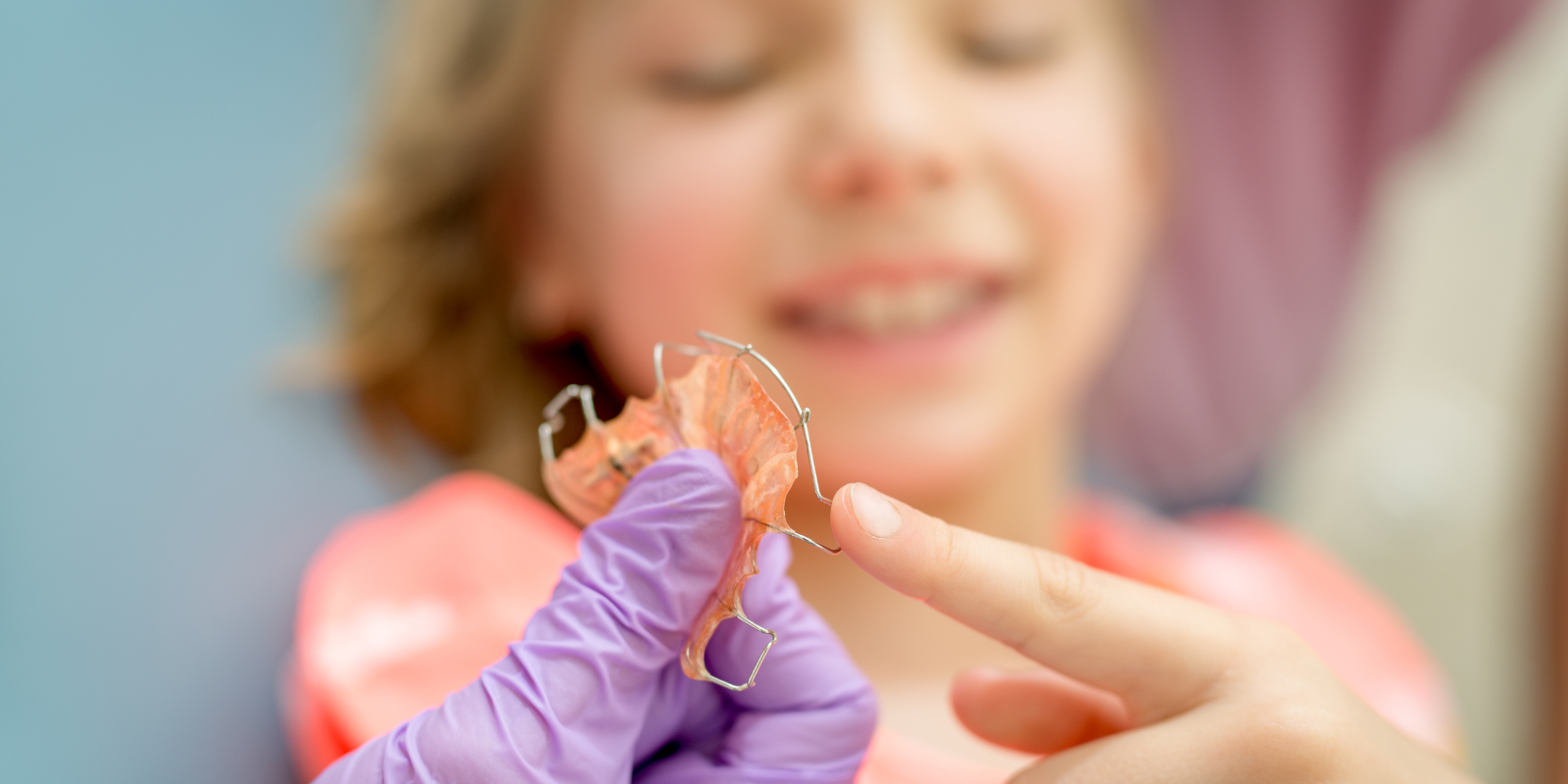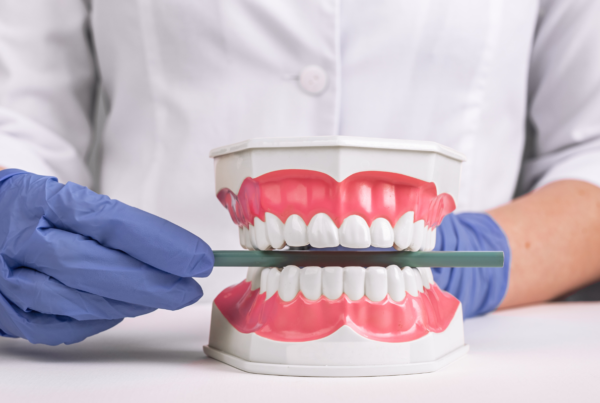- What is an orthodontic appliance?
- Types of orthodontic appliances – fixed, removable, and aligners
- Who are orthodontic appliances for?
- How to clean a fixed orthodontic appliance and brush teeth with braces
- How to clean a removable orthodontic appliance
- Shared hygiene guidelines for both types of appliances
- Summary

Wearing an orthodontic appliance, whether fixed or removable, is a major step toward achieving a beautiful smile and healthy teeth. However, maintaining proper oral hygiene during orthodontic treatment requires more attention and commitment than under standard conditions. Neglecting to clean the appliance regularly can lead to serious consequences, such as accelerated tooth decay, gum inflammation, plaque buildup, tooth discoloration, and even oral infections. Below is a guide to caring for both fixed and removable appliances to ensure smooth and trouble-free treatment. How should you care for a removable and a fixed orthodontic appliance? Read on to find out.
What is an orthodontic appliance?
An orthodontic appliance is not just a medical device—it is also an important tool for supporting oral health. Its primary function is to improve smile aesthetics, but also to promote the health of teeth and gums. Crooked teeth, especially front teeth, an open bite, overjet, or crossbite, can affect appearance and make chewing, speaking, and cleaning more difficult. Orthodontic treatment, though it takes time and effort, delivers long-lasting results and improves the patient’s quality of life.
Types of orthodontic appliances – fixed, removable, and aligners
Removable appliances
These are removable devices mainly used for children and adolescents during jaw development. Removable appliances are recommended for minor bite issues, such as small tooth shifts or early-stage bite development. They are worn for a specific time during the day and removed for eating or sleeping. They are comfortable and relatively easy to clean.
Fixed appliances
These devices are bonded to the teeth and remain in place throughout the treatment. They consist of brackets attached to the teeth, including molars, as well as archwires and ligatures that apply pressure to reposition the teeth. Fixed appliances come in several types:
- Metal – durable, common, and affordable
- Aesthetic – made from ceramic or crystal, less visible but more expensive
- Self-ligating – featuring a special clip mechanism instead of elastics
- Lingual – mounted on the inside surfaces of the teeth, completely invisible from the outside
Clear aligners
These are modern, transparent orthodontic trays made of plastic that straighten teeth discreetly. Aligners are removable, making eating and hygiene easier. They are ideal for correcting minor misalignments and are increasingly popular due to their comfort and aesthetics.
Who are orthodontic appliances for?
Orthodontic appliances are suitable for people of all ages—children, teenagers, and adults—who want to improve their smile and oral health. In children, appliances are primarily used for preventive purposes to correct developing bite problems and support proper jaw growth. In teenagers, appliances—most often fixed—help treat more advanced issues such as tooth crowding or incorrect bite alignment.
More and more adults are choosing orthodontic treatment despite its longer duration. Appliances not only enhance smile aesthetics but also help address problems such as tooth wear, temporomandibular joint pain, or preparation for dental implants. Thanks to modern solutions such as clear aligners or lingual braces, treatment is now more comfortable and discreet. After the main therapy, patients often wear a retainer to prevent the teeth from shifting back to their original position.
It’s an ideal solution for anyone who wants to take care of their oral health and enjoy a straight, beautiful smile. A single visit to the orthodontist is enough to create a personalized treatment plan.
How to clean a fixed orthodontic appliance and brush teeth with braces
A fixed appliance is the most commonly used type in orthodontic therapy. It consists of brackets, wires, and other components that are bonded to the surface of the teeth. Food particles and plaque accumulate around these parts, making thorough cleaning essential. The best tools for cleaning include interdental toothbrushes and water flossers.
Daily oral hygiene with a fixed appliance
To properly clean teeth with a fixed appliance, it’s important to use a specialized orthodontic toothbrush and toothpaste at least twice a day, in the morning and evening. Orthodontic toothbrushes have a V-shaped bristle design that allows precise cleaning of both teeth surfaces and brackets. Hold the brush at a 45-degree angle to the teeth to effectively remove debris from around the brackets and wires. Use gentle movements to avoid damaging the components of the appliance.
Cleaning hard-to-reach areas
Fixed braces create many nooks where food and bacteria can accumulate. To clean these areas effectively, use interdental brushes that can reach between the teeth and wires. Dental water flossers are also highly effective; they use a stream of water to rinse debris from sensitive areas. For flossing, special orthodontic dental floss with a stiffened end is recommended to slide easily under the archwire. Regular flossing helps prevent plaque buildup and tooth decay in areas that a toothbrush can’t reach.
Specialized hygiene products
An essential part of daily care is the use of orthodontic toothpaste containing fluoride to strengthen enamel and prevent cavities. Additionally, mouthwash can reduce bacteria, freshen breath, and help clean areas that are difficult to reach with a brush.
Additional tips
While wearing braces, avoid eating hard foods such as nuts, raw vegetables, or chips, as they may damage the appliance. Sticky foods like caramel or chewing gum should also be avoided because they can stick to brackets and wires. Regular visits to the orthodontist are essential to check the appliance, make adjustments, and receive personalized care advice.
READ MORE: TONGUE SCRAPER
How to clean a removable orthodontic appliance
Removable appliances are worn only for part of the day and taken out for eating, sleeping, or oral hygiene. Like dentures, they require systematic cleaning to prevent bacterial buildup and plaque formation. Although maintenance differs from that of a fixed appliance, consistency and precision are still essential.
- Daily care for removable appliances. After removing the appliance, wash it thoroughly to remove plaque and food residue. Use a soft-bristled toothbrush and mild soap. Rinse and dry the appliance afterward. Avoid using regular toothpaste, as its abrasive particles may scratch the surface—especially if it contains plastic components.
- Appliance disinfection. In addition to daily cleaning, disinfect the appliance every few days. Special cleaning tablets for dentures effectively remove tartar and maintain hygiene. Soak the appliance in the solution for the time recommended by the manufacturer. You can also use denture-cleaning paste for additional sanitation.
- Proper storage. When not in use, the appliance should be kept in a protective case to prevent damage and contamination. Clean and disinfect the storage case regularly. Always dry the appliance thoroughly before storing it to reduce bacterial growth.
- Extra care guidelines. Do not immerse the appliance in hot water, as high temperatures can deform plastic components. If advised by the orthodontist to remove the appliance during meals, avoid wearing it while eating to prevent breakage.
Shared hygiene guidelines for both types of appliances
Regardless of the type of orthodontic appliance, regular and thorough hygiene is crucial. Follow the schedule of checkups with your orthodontist, who will assess the condition of the appliance and treatment progress. A healthy diet also supports hygiene—limit sweets and sugary drinks that contribute to plaque formation.
Effective cleaning using water flossers and interdental brushes removes residue from hard-to-reach areas. If in doubt, consult your orthodontist for the best tools and techniques tailored to your case.
Summary
Proper and consistent cleaning of fixed or removable orthodontic appliances is key to maintaining oral health and achieving the best treatment outcomes. Brushing your teeth regularly, using specialized products, avoiding harmful habits, and following your orthodontist’s recommendations can prevent issues such as tooth decay, gum inflammation, or staining. If you wear an orthodontic appliance, we hope this article helps you take care of it properly.





